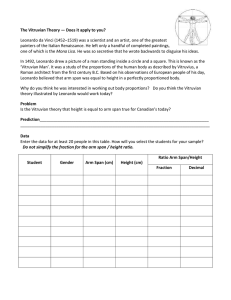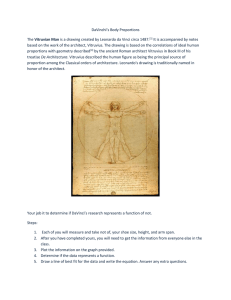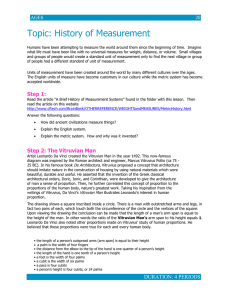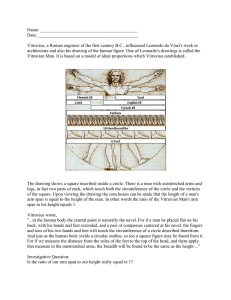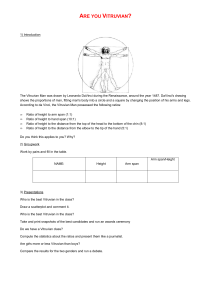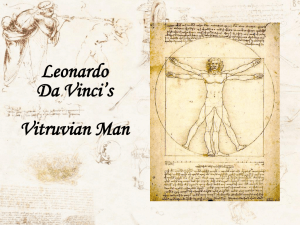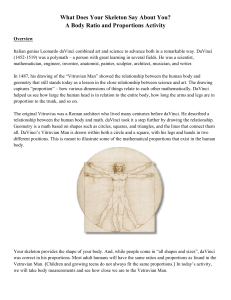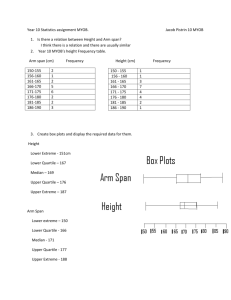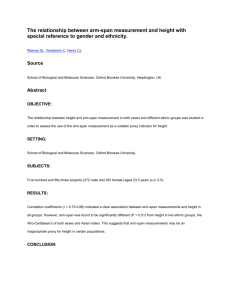The Vitruvian Theory Does it apply today? In 1492, Leonardo Da
advertisement
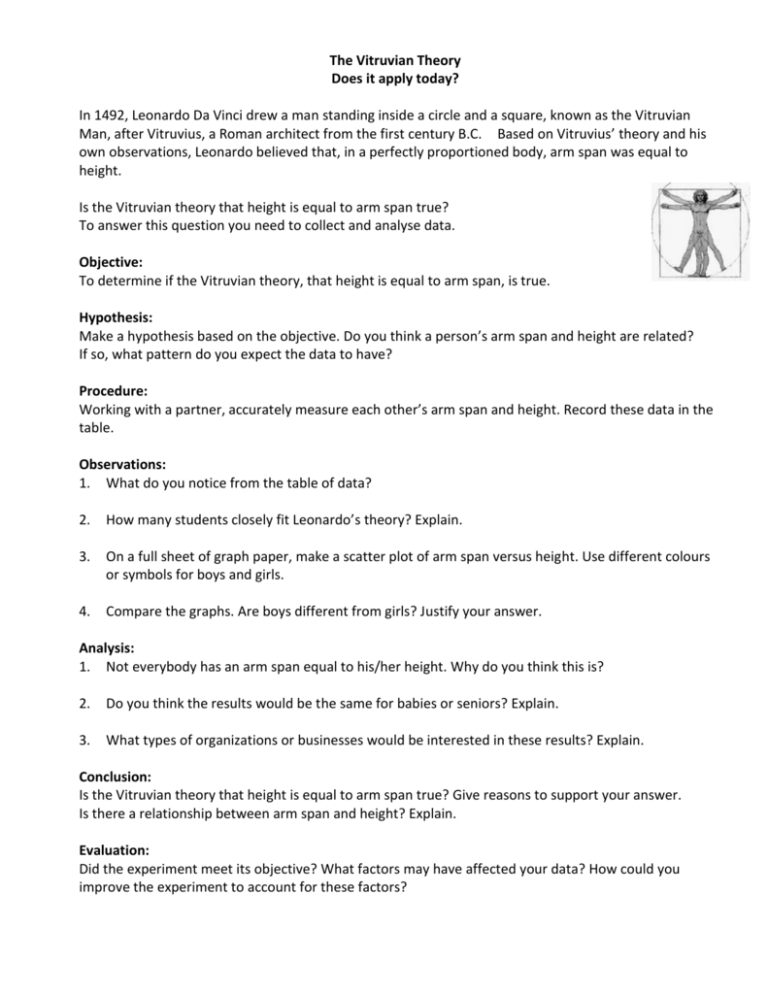
The Vitruvian Theory Does it apply today? In 1492, Leonardo Da Vinci drew a man standing inside a circle and a square, known as the Vitruvian Man, after Vitruvius, a Roman architect from the first century B.C. Based on Vitruvius’ theory and his own observations, Leonardo believed that, in a perfectly proportioned body, arm span was equal to height. Is the Vitruvian theory that height is equal to arm span true? To answer this question you need to collect and analyse data. Objective: To determine if the Vitruvian theory, that height is equal to arm span, is true. Hypothesis: Make a hypothesis based on the objective. Do you think a person’s arm span and height are related? If so, what pattern do you expect the data to have? Procedure: Working with a partner, accurately measure each other’s arm span and height. Record these data in the table. Observations: 1. What do you notice from the table of data? 2. How many students closely fit Leonardo’s theory? Explain. 3. On a full sheet of graph paper, make a scatter plot of arm span versus height. Use different colours or symbols for boys and girls. 4. Compare the graphs. Are boys different from girls? Justify your answer. Analysis: 1. Not everybody has an arm span equal to his/her height. Why do you think this is? 2. Do you think the results would be the same for babies or seniors? Explain. 3. What types of organizations or businesses would be interested in these results? Explain. Conclusion: Is the Vitruvian theory that height is equal to arm span true? Give reasons to support your answer. Is there a relationship between arm span and height? Explain. Evaluation: Did the experiment meet its objective? What factors may have affected your data? How could you improve the experiment to account for these factors?
